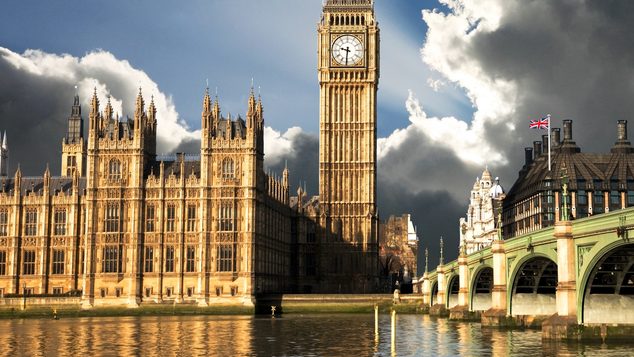When the going gets weird, the weird turn pro.
Hunter S. Thompson, Fear and Loathing on the Campaign Trail ‘72
What Is a Market?
There is a tendency among observers to see financial-market outcomes as the result of the innumerable decisions made by ‘fundamental investors’. Securities deemed to be trading at a price above their fundamental value are sold, while those securities deemed to be trading below their fundamental value are bought. It was the approach espoused by Benjamin Graham, made famous by Warren Buffett and subscribed to the world over.
For a moment, consider what a market is and how it operates. In the most generic terms, a market is a place where people go to do business. Buyers and sellers transact, and the price moves to facilitate the greatest volume of business. As the market auctions higher, it will eventually reach a price too high to facilitate trade. Buyers then step away and sellers step forward, and the price stabilizes before declining in search of a level at which buyers and sellers will once again transact. The obverse is true in selling auctions.
Financial markets, in their essence, are exactly the same as any other market. In today’s financial markets there are many approaches to determining whether to buy or sell a security. As such, it is wrong to interpret financial-market outcomes as indicating the aggregate opinion of ‘fundamental value’. Rather, they are simply a function of the aggregate supply and demand at each price.
The supply of securities is determined by companies and governments, changing through time as these institutions issue and repay obligations. The demand side, however, is more opaque. Intuitively, the demand for securities comes from savers: those who refrain from spending all of their current income can use the surplus to invest in the hope of earning a return that will increase the purchasing power of their savings. This applies not just to individuals but also to companies and governments.
But in recent decades there has been another more and more important source of demand: it has become increasingly common practice to use leverage to increase exposure to financial securities. The ways in which this has been made possible range from hedge funds accessing a line of credit from a prime broker to institutional investors taking exposure through futures and the use of options. Over time, this practice has also become increasingly accessible to the retail investor.
For several decades there has been a secular increase in the demand for financial assets, not just owing to a growing pool of savings but also because of the increased use of leverage to increase exposure to financial securities. This long-term increase in demand could not have happened without a corresponding decline in interest rates. Directly, lower interest rates reduced the cost of using credit to increase exposure to financial securities, thereby reducing the hurdle rate for using leverage. Indirectly, the decline in interest rates has coincided with historically elevated rates of bank credit growth, which has translated into an increased pool of aggregate savings.
In recent decades, far more often than not, the demand for financial assets has outstripped supply. It should come as no surprise then that, almost without exception, the aggregate price level of financial assets has continued to increase. This has gone hand in hand with a continued expansion of valuations, whether price-to-earnings multiples, price-to-sales multiples, or bond yields. It has also affected non-financial assets, with a steady rise in house prices as a multiple of average incomes. From this perspective, the secular advance of asset prices is in large part a function of a secular expansion of liquidity which, in turn, has been dependent on falling interest rates. But what happens if rates stop declining?
Market Review
The consequences of rising market yields moved down the list of investor concerns over the summer as yields drifted steadily lower. This was despite the fact that inflation measures around the world continued to print at levels not seen since before the global financial crisis. As such, it appeared that the bond market was endorsing the message from the world’s central banks – that the acceleration of inflation was temporary, attributable to base effects and supply-chain disruptions that would be resolved with time. The bond market was not alone. The story for much of the second and third quarters of this year was the outperformance of secular-growth equities at the expense of those parts of the markets deemed to be the beneficiaries of higher inflation. Similarly, the US dollar confirmed that the downtrend in place since late March 2020 had come to an end.
As yields declined and cyclical equities gave up leadership, investors became less optimistic about the outlook. The Covid-19 Delta variant and its impact on economic growth, and the US Federal Reserve (Fed) taking a more ‘hawkish’ stance than anticipated, were first on the list of concerns. While equity-market leadership changed over the summer, the equity market in aggregate continued to grind higher. That was until September, when global equities began an extended decline continuing into the fourth quarter.
When the pullback began, investor angst was focused on Evergrande and the fortunes of China’s property sector. However, as the correction continued, the list of problem children grew. Concerns about the US debt ceiling and the watering down of US fiscal stimulus were much discussed, but it was the sharp move higher in US Treasury yields following September’s Federal Open Market Committee (FOMC) meeting that was generally judged to be to blame. At the meeting, Fed Chair Jerome Powell stated that “the ‘substantial further progress’ test [referring to maximum employment] is all but met”, while its 2% average inflation target had already been achieved. As such, it was appropriate to begin tapering the Fed’s US$120 billion per month asset-purchasing program. In addition, the Fed indicated that interest-rate hikes could begin in 2022, having indicated no rate hikes until 2023 at the previous FOMC meeting.
Long-duration growth equities saw sharp declines, weighing heavily on the indices given the increased dominance of these stocks over recent years. Banks and energy equities, however, advanced, breaking out from an extended period of consolidation over the summer, as investors once again reassessed the outlook for these companies. So, has the break from worrying about inflation come to an end?

Coming to the Boil
Often a firmer dollar will help to take commodities off the boil. It is therefore notable that this has not been the case in 2021. The Bloomberg Commodity Index continues to make new highs and is up +29.1% year to date, and up +71.5% from the March 2020 low to the close of the third quarter.1
Energy prices were at the forefront of investors’ minds over the quarter as coal, liquified natural gas and power prices reached all-time highs, while the oil price reached levels not seen since 2014. This coincided with power rationing, blackouts and factory shutdowns occurring in China and Europe, with impacts on supply chains from food processing to transport of goods and fuel deliveries.
Tightness in energy markets does not appear to be going away any time soon. Governments have already been stepping in to deal with the issue. Spain announced a windfall tax on utilities and a cap on consumer bills. Similarly, Italian Prime Minister Mario Draghi announced that his government will subsidize consumers’ energy bills, having already spent €1.2 billion in the second quarter, which is estimated to have cut the consumer price increase to 9% from an initial 20%.2 A number of factors have contributed to the spike in energy prices, from supply-chain disruption, years of subdued capital expenditure and geopolitics, to the impact of the move to green energy sources.
Not all commodities held up over the third quarter. The price of iron ore as traded on China’s Dalian Exchange closed the quarter down -42.4% from the May highs.3 Alongside concerns about Evergrande and the broader Chinese property sector, this left investors worrying about the outlook for China’s economic growth.
Common Prosperity
Having led the global economy out of the 2020 recession, China’s standing with investors has steadily fallen over the course of 2021. In particular, equity investors have become increasingly frustrated as various high-profile businesses and industries have been subject to a tightening of the regulatory screws. The most conspicuous crackdown has been the antitrust investigations into China’s large technology companies, while the entire online education industry has also been the focus of regulators. It is possible to explain each in terms of idiosyncratic factors but there does appear to be a common thread: any institution that is deemed to wield too much power and influence, or is at odds with the Chinese Communist Party (CCP) or its objectives, is at risk. It has become increasingly clear that the ultimate objective is that of ‘common prosperity’.
The goal is to create an ‘olive-shaped’ society with a wide middle class and few at the extremes of wealth or poverty. By distributing wealth more evenly, the CCP hopes that more Chinese will have the spending power to drive the economy and reduce China’s reliance on Western capital and know-how, creating the foundation for a new stage of growth. The CCP has had phenomenal success at raising living standards in recent decades, but with economic growth moderating, social pressures are increasingly coming to the fore. Many young Chinese feel that upward mobility is diminishing. Well-paying white-collar jobs can be hard to find, which is increasingly problematic for a well-educated workforce. Despite an end to the one-child policy, many families feel they cannot afford to have more children, adding to a looming demographic crisis. As Xi told officials in January, “Achieving common prosperity is not just an economic issue; it’s a major political matter bearing on the party’s foundation for rule. We cannot let an unbridgeable gulf appear between the rich and the poor”.
And so, as economic growth slows, Beijing is seeking to restructure China’s economic model for a third time in as many decades. The economic and market consequences of any pivot are likely to ripple across the globe for years to come.

Ever Grand
It is probable that we have already begun to see the consequences of China’s shift in policy objectives in the rapidly declining fortunes of Evergrande. Evergrande is the biggest player in the biggest industry sector in the second-largest economy in the world. As such, it is the poster child for the rapid growth of China’s property industry.
Real-estate investment is, and has been, a very important driver of the overall Chinese economy. It has grown from a 5% share of GDP in 1995 to over 13% in 2019, of which over 70% is residential. Incorporating industries downstream and upstream of real estate, the sector makes up 29% of Chinese GDP (comparable internationally only to Spain and Ireland before the global financial crisis).4 In the years following the financial crisis, the property market has been the fulcrum of China’s economic cycle. The government has intervened numerous times to influence the residential real-estate market. Using tax, mortgage rates, mortgage quotas, controls on secondary-market listing prices and other tools, it has attempted to steer the residential-property market between boom and bust.
It is increasingly clear, however, that Beijing is unwilling to pump the property sector to fuel economic growth. Since 2017 the consistent message out of Beijing has been that houses are ‘for living in, not speculation’. This is consistent with theme of common prosperity, but also the stated objective of reducing leverage and financial risk. In 2020 the People’s Bank of China and the Ministry of Housing imposed three ‘red lines’ on property developers that required them to control their debt levels. Evergrande remains firmly in the ‘red group’.
Its balance sheet is enormous, with liabilities standing at US$305 billion at the end of June 2021, and it is the largest issuer of US dollar-denominated Chinese junk bonds. Evergrande has made itself too big to fail, and for this reason its demise may be less a product of its financial position and more because of its political position. The writing was perhaps on the wall when China’s financial regulator instructed banks to conduct a stress test around an Evergrande failure.5 In September, Evergrande defaulted on a number of bonds while its market capitalization suggests it will cease to be a going concern before long.
For many years, investors have worried about the imbalances and latent risks brought about by the rapid growth of China’s property industry and the credit expansion that has underpinned it. These are concerns that we share, and we do not invest in Evergrande, nor the equity of any other Chinese property developer. Nevertheless, it is a situation we continue to monitor closely. Recency bias dictates that many in markets see Evergrande’s troubles as the beginning of China’s ‘Lehman moment’. While we have concerns about the risks latent in China’s bloated aggregate balance sheet, we do not yet see evidence that Evergrande’s problems are translating into rising systemic risk. Beijing has form with respect to dealing with credit issues, and at the time of writing it appears to be managing the situation. There will, of course, be losses and it remains to be seen how these are allocated by the Chinese authorities. But the bigger question relates to the broader market and economic consequences of Beijing’s pivot away from using the property sector to manage economic growth.
Shifting Tectonic Plates
A common theme of this note in recent years is that the consensus that prevailed before the global financial crisis across much of the world with respect to how economies and financial markets should be managed is being steadily eroded. China always stood apart from this consensus but nevertheless became increasingly integrated into the global economy and financial system through its period of rapid economic growth after joining the World Trade Organization in 2001. With the shift in China’s policy objectives – in particular as it no longer appears to be using the property sector to manage economic growth – it is increasingly probable that China’s economic growth will slow significantly from here.
China has been the main driver of global growth since the global financial crisis, so a sustained slowdown there will affect global growth and the fortunes of many companies around the world, both directly and indirectly. As such, investors can add the evolution of China’s economic model to the list of factors they must grapple with.
A key component of our China influence theme has been the rapid expansion of bank credit that has taken place, particularly since the financial crisis. This has led to China accounting for over 50% of the increase in the world’s money supply in US-dollar terms since 2009, thus making it the primary source of incremental liquidity. The impact on assets over this period has been clear, with Chinese individuals and institutions major buyers of everything from property and global equities to fine art and cryptocurrencies. A slowdown in China’s credit growth will see its contribution to the secular bid for assets wane. It will also affect non-financial asset prices, with China by far the largest consumer of many commodities.
The first-order effect of a slowing China would therefore appear to have the potential to be disinflationary. But as we have noted elsewhere, the erosion of the pre-financial crisis consensus has played out in the form of a move towards increased government intervention within economies in the West, a willingness to use central-bank balance sheets to finance fiscal deficits, and growing apathy towards globalization in favor of national interests. Taken together, these developments are likely to lead to higher inflation over time, and it is probable that slower global growth will see a further move in this direction as governments seek to boost economic growth domestically.
The pendulum continues to swing from the policy prescriptions of supply-side economics to demand-side economics. With it, there is a growing probability that the secular decline in interest rates has come to an end, which will have major implications for the secular bid for assets.

1 Source: Bloomberg, October 1, 2021
2 https://www.reuters.com/article/power-price-italy-idUSL8N2QP519
3 Source: Bloomberg, October 1, 2021
4 Source: Peak China Housing, Rogoff & Yang, August 2020
5 https://www.bloomberg.com/news/articles/2021-06-08/china-tells-banks-to-stress-test-their-evergrande-exposure?sref=Qfdx0Q4F
Important information
This is a financial promotion. This document is for institutional investors only. Issued by Newton Investment Management Limited, The Bank of New York Mellon Centre, 160 Queen Victoria Street, London, EC4V 4LA. Registered in England No. 01371973. Newton Investment Management is authorized and regulated by the Financial Conduct Authority, 12 Endeavour Square, London, E20 1JN. 'Newton Investment Management Group' is used to collectively describe a group of affiliated companies that provide investment advisory services under the brand name 'Newton' or 'Newton Investment Management'. Investment advisory services are provided in the United Kingdom by Newton Investment Management Ltd (NIM) and in the United States by Newton Investment Management North America LLC (NIMNA). Both firms are indirect subsidiaries of The Bank of New York Mellon Corporation ('BNY Mellon'). Newton Investment Management Limited is registered with the SEC as an investment adviser under the Investment Advisers Act of 1940. Newton Investment Management Limited’s investment business is described in Form ADV, Part 1 and 2, which can be obtained from the SEC.gov website or obtained upon request. In Canada, Newton Investment Management Limited is availing itself of the International Adviser Exemption (IAE) in the following Provinces: Alberta, British Columbia, Ontario and Quebec and the foreign commodity trading advisor exemption in Ontario. The IAE is in compliance with National Instrument 31-103, Registration Requirements, Exemptions and Ongoing Registrant Obligations. Personnel of certain of our BNY Mellon affiliates may act as: (i) registered representatives of BNY Mellon Securities Corporation (in its capacity as a registered broker-dealer) to offer securities, (ii) officers of the Bank of New York Mellon (a New York chartered bank) to offer bank-maintained collective investment funds, and (iii) Associated Persons of BNY Mellon Securities Corporation (in its capacity as a registered investment adviser) to offer separately managed accounts managed by BNY Mellon Investment Management firms, including Newton. Certain information contained herein is based on outside sources believed to be reliable, but their accuracy is not guaranteed. Unless you are notified to the contrary, the products and services mentioned are not insured by the FDIC (or by any governmental entity) and are not guaranteed by or obligations of The Bank of New York or any of its affiliates. The Bank of New York assumes no responsibility for the accuracy or completeness of the above data and disclaims all expressed or implied warranties in connection therewith. © 2021 The Bank of New York Company, Inc. All rights reserved. Material in this publication is for general information only. The opinions expressed in this document are those of Newton and should not be construed as investment advice or recommendations for any purchase or sale of any specific security or commodity. Any reference to a specific security, country or sector should not be construed as a recommendation to buy or sell investments in those countries or sectors. The companies referenced may or may not represent securities purchased or sold for advisory clients. It should not be assumed that an investment in the companies discussed was or will be profitable.




